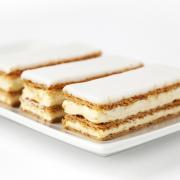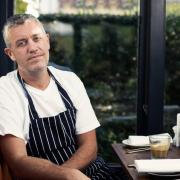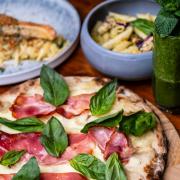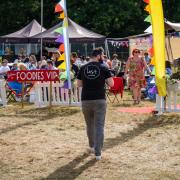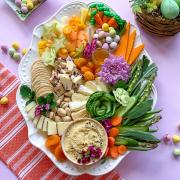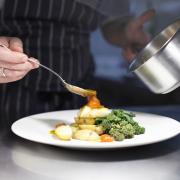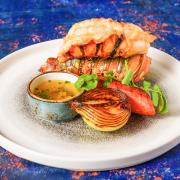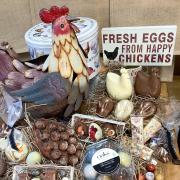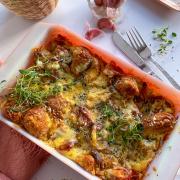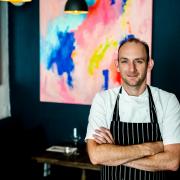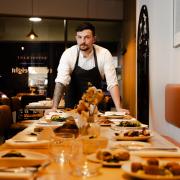A new artisan cheesemaker in Malpas is defying the recession - and helping to keep Cheshire cheese on the nation's dinner tables WORDS BY RAY KING PHOTOGRAPHY BY KIRSTY THOMPSON
When Windsors of Whitchurch ceased production of Cheshire cheese last year, it looked like another blow for Britain’s oldest cheese. Claiming a history dating back to the Normans in the 1100s, Cheshire was the nation’s favourite in the late 18th century and a staple of the Royal Navy’s ships-of-the-line.
Despite production being interrupted during the Second World War, sales peaked at 40,000 tonnes in 1940. Today sales are estimated at a sixth of that figure, though Cheshire remains the UK’s largest-selling crumbly cheese in a hugely competitive market.
But take a closer look and it’s possible to detect not a decline, but a renaissance - especially of traditionally-made Cheshire cheese. Moreover it dovetails into a much broader and exciting movement towards smaller-scale production of highest-quality local food from artisan bread and Cheshire pancetta to fruit juices and micro-brewed beers.
The parallel between cheesemaking and brewing is a pertinent one. The takeover and closure of many regional breweries was much lamented – but recent times have seen an astonishing rebirth of not so much regional, but local beers of which Tatton Gold from Knutsford and Spitting Feathers from Waverton are just two.
Combine traditional artisan Cheshire cheese with hand-crafted Cheshire beer and we have a ploughman’s lunch made in heaven.
It is into this new wave of old methods that Guy Dimelow has launched his fledgling business, Chorlton Cheese, at his farm near the picturesque village of Malpas, just four miles from Cheshire’s borders with Shropshire and Wales. Guy, 30, third generation at Chorlton Hall Farm, was a cheesemaker for ten years before being made redundant when Windsor’s closed its operation.
‘Cheesemaking was the only thing I could do,’ said Guy. ‘So I investigated the possibility of going into business myself and finally started up last November. I’ve had a lot of extremely valuable help from my friend Paul Hammond, who has massive experience from being head cheesemaker at Windsors for 35 years and from Nicola Cooper, Cheshire West and Chester Council’s environmental health practitioner.
‘She’s very knowledgeable about Cheshire produce, especially dairy, and helped me through the stringent processes of making an unpasteurised Cheshire in the old style.’
Nonetheless, starting up was a big step. Though Cheshire has many cheese makers, the number making original Cheshire cheese is tiny. According to ‘Cheese Detective’ Peter Paprill, Guy is the first to take the plunge since the 1950s, sourcing his stainless steel vat second hand and other equipment via eBay (the Chorlton Cheese logo was created by a graphic designer in Malpas).
Once a week Guy takes delivery of 1,000 litres of the finest quality raw milk from Neil Matthews Friesian herd at Poplar Hall Farm in Tattenhall and stirs it in the vat with a large hand paddle while the temperature is brought up to 30C. Finest starter culture is added and then vegetarian rennet to set the curd which is cut by hand using traditional cutters. The whey is drained away and used as feed for pigs whose manure, says Paprill, fertilises the lush grass for the milk-producing cows: ‘the Cheshire circle’.
Guy’s cheese is pressed and re-pressed in moulds over three days, dried, waxed and put into cold store for 10-12 weeks to mature. Cheshire is one of the UK’s fastest maturing cheeses (even mild Cheddar takes six months), ensuring its characteristic fresh acidity and crumbly yet moist and firm texture. Its salty quality derives from the luxuriant pastures of the Cheshire plain overlying salt measures.
He makes 50-50 white and red Cheshire – the red is made through the addition, at a very early stage in production of the vegetable dye annatto, though there is no effect on taste. Chorlton Cheese has been very well received from the outset, credited with ‘everlasting lemony notes’ and ‘a crumble that melts in the mouth perfectly’.
The 1,000 litres of milk, priced at around 26p a litre, produces 140 kilos of cheese and 800 litres of whey. Each cheese, weighing seven to eight kilos, fetches around �60-�70 suggesting an annual turnover of around �80,000.
‘It’s a top-quality product, said Guy, who aims to start making Cheshire butter, ‘and I believe it’s a viable business. I’m not looking to make huge amounts of money; I’m aiming to support my wife Nisha and 10-month old son Aron on the farm doing something I’m very passionate about.
‘And I really do love Cheshire cheese. It’s part of our tradition. All it needs is a good crusty loaf and a bottle of beer. And served with a spoonful of honey, it’s sublime.’





